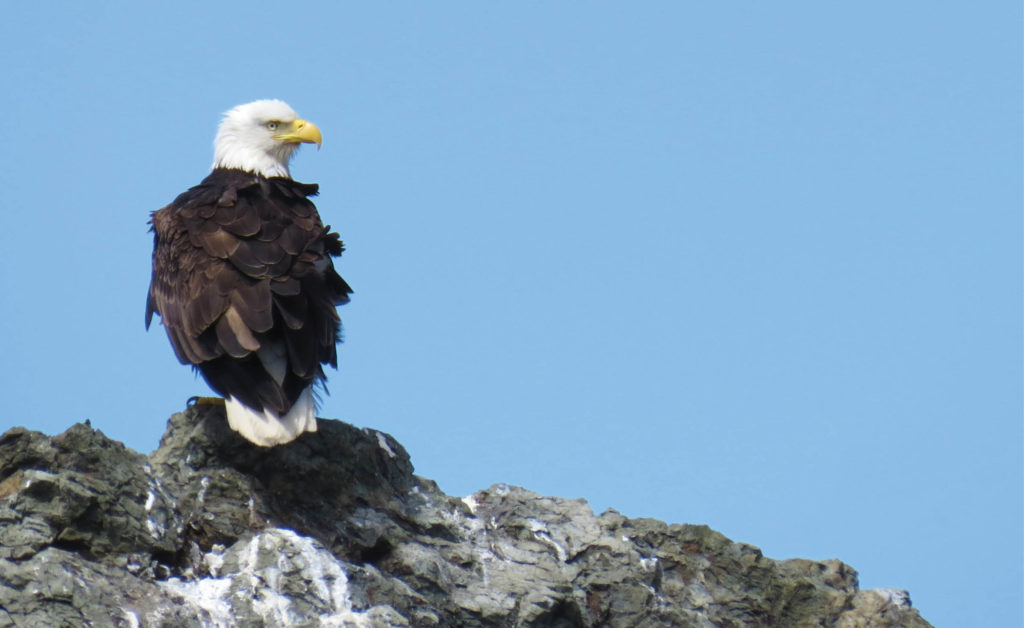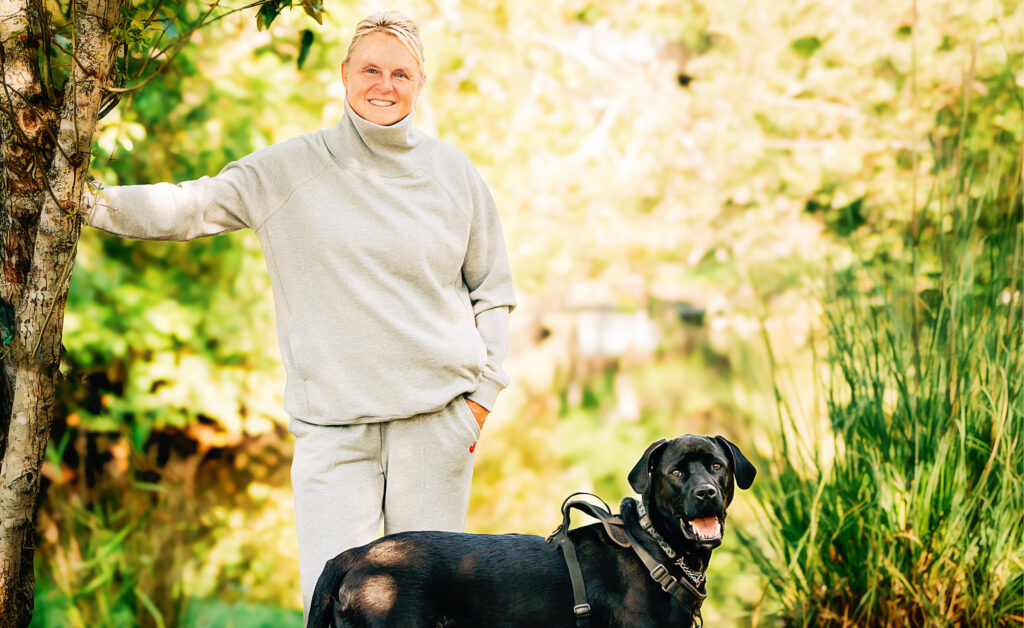by Tina Kelly, Shaw Centre for the Salish Sea –
Less screen time and more time outside. These days that’s the advice from experts. But we raise our hand high to suggest an exception: the Salish Sea reality show staring Trooper and Ma Delta, a mated pair of bald eagles featured in one of Hancock Wildlife Foundation’s live cameras.
For some time now, my colleagues and I have been eagerly awaiting the hatching of Trooper and Ma Delta’s clutch. The nest may be physically located in Delta, across the Strait of Georgia, but the nest’s activity can be streamed anywhere and has been playing out on at least two of the Shaw Centre for the Salish Sea’s screens. If you’ve visited the Centre recently, you may have met an Educator excited to point out the activity in the nest. This year Ma Delta laid three eggs; a bald eagle clutch can range from one to three eggs. Both parents – one at a time – dutifully and diligently tend the eggs, giving them a turn and keeping them warm and hidden from predators.
Which parent is on the nest at any given time is anyone’s guess. Bald eagles are sexually dimorphic – displaying visible differences in sex in size only with the female being up to 25% larger than the male. Unless viewed side by side at just the right angle, we just can’t be sure. (Moderators and avid watchers of the site have discovered a small visible difference between these two particular individuals; check out the website’s forum for more information.) Eggs hatch after incubating for 26 to 34 days. These three eggs were laid February 27, March 2 and March 5 and at the time this article was submitted, two eggs had recently – to staff delight – hatched and fingers and toes were all crossed the third would soon safely hatch.
Just like taking turns incubating the eggs, eagle parents share the responsibility of hunting for food and feeding their offspring. Bald eagles are incredible hunters. Eagle eyes, as the expression goes, are extremely powerful. Eagles can see objects four to five times farther away than the human eye. They also have monocular and binocular vision and are able to use their eyes independently from each other.
When one parent arrives at the nest with food, the other parent flies off to hunt. Newly-hatched eaglets have little control over their bodies. The unsteady neck movement reminds me of a bobblehead ornament you’d see on a car dashboard. This is most noticeable during feeding time. The feeding parent uses its sharp hooked beak to tear food into small manageable pieces for the eaglets. In years past, we’ve seen a variety of prey brought to the nest including salmon, flounders, sculpins, rabbits, black oystercatchers and mallard ducks.
The young eat a lot and grow fast, from clumsy balls of grey fluff to fully feathered fledglings in roughly 12 weeks. Watch them practise flapping their wings as they ready themselves to leave the nest. Bald eagles are mottled brown until they reach sexual maturity at four to five years old. It’s then that their head and tail feathers turn white and their beak changes colour from black-brown to vibrant yellow.
There are a couple more months to view this season’s “Keeping up with the Eagles.” We recommend watching through to the season finale and tune in again next year starting in February. Just like an eagle beak, you’ll be hooked! Website: hancockwildlife.org/delta-2-cams/.
The Shaw Centre for the Salish Sea is a non-profit aquarium and education centre located on the traditional territory of the W̱SÁNEĆ people. For more information visit www.salishseacentre.org.




